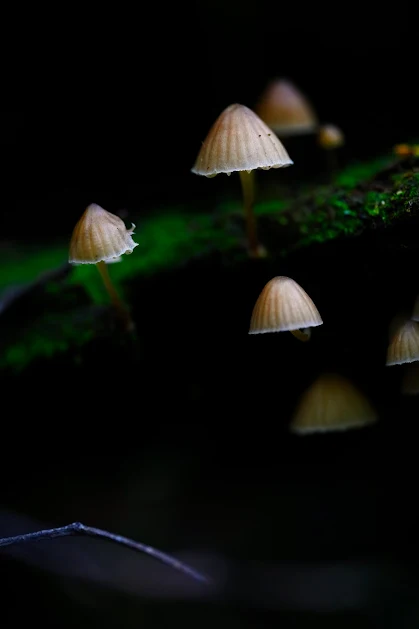Another weekend has been marred by inclement weather. Joel and I sought our customary refuge at the Japanese bar, where the comfort of warm sake provided some consolation. Indeed, I intend to replenish my supply of sake regardless.
What follows is one from my collection of macro studies of fungi, taken upon the slopes of Mount Macedon. The mountain, with its cool and shaded gullies, provides an ideal environment for such delicate growths, whose minute forms reveal unexpected intricacies when examined closely.
For those who journey from the eastern fringes of Melbourne, the approach to Mount Macedon is a gentle transition from suburban streets into pastoral scenery. One may take the Eastern Freeway, continuing westward until it joins the CityLink or Tullamarine Freeway. From there, the Calder Freeway leads north-west through undulating countryside, with fields and woodlands unfolding in succession. After approximately an hour’s drive, the great massif of Mount Macedon rises ahead, its slopes cloaked in towering eucalypts and, in the cooler months, veiled in mist. The road winds upwards from Macedon township, affording ever-widening views of the surrounding plains until one arrives at the forested heights where nature’s more secret marvels—such as the fungi I photographed—lie hidden beneath the canopy.
Sony A7RV
Sigma 105mm f2.8 Macro
Linking Sunday Best














